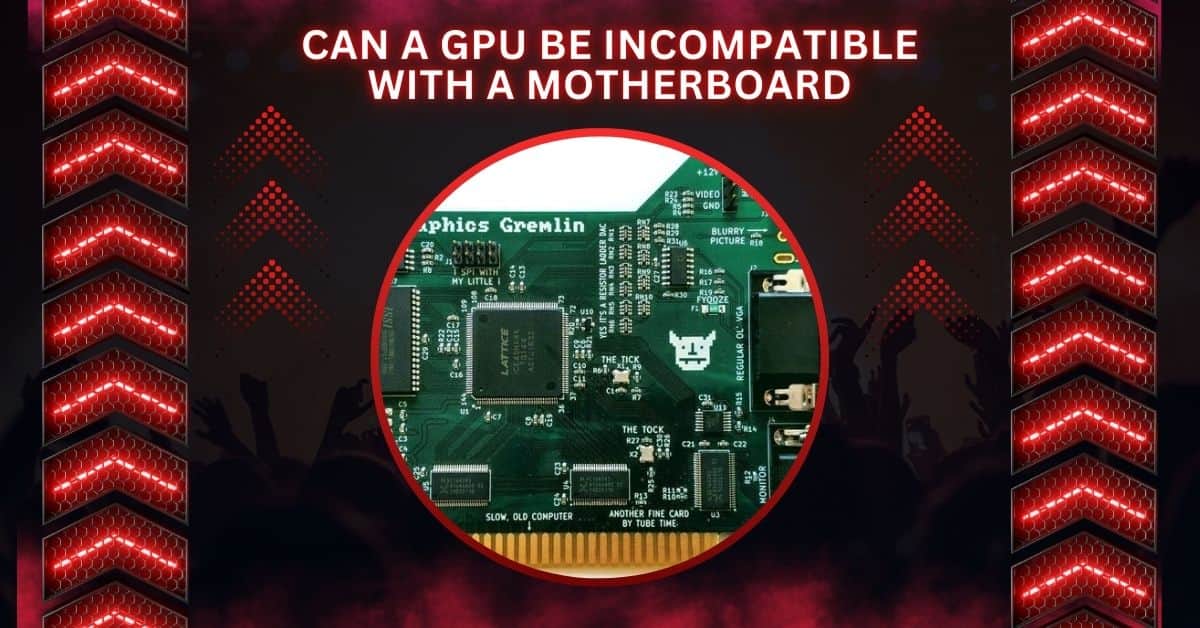Building or upgrading a computer can be a thrilling experience, but it comes with its own set of challenges.
Yes, a GPU can be incompatible with a motherboard if the PCIe slot, power supply, or BIOS do not match the GPU’s requirements. Most GPUs fit most motherboards, but checking compatibility is essential to avoid issues.
In this article, we explore why GPU and motherboard compatibility matters and how to ensure a perfect match.
Understanding GPU And Motherboard Compatibility
GPU and motherboard compatibility means ensuring they work well together in your computer. This involves checking if the GPU fits into the motherboard’s slot, that it gets enough power, and that the motherboard supports the GPU’s features.
Making sure these parts are compatible helps your computer run smoothly and efficiently, preventing problems like system crashes or poor performance.
Physical Interface Compatibility
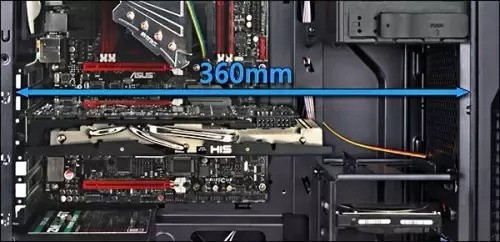
Physical interface compatibility is about making sure your GPU fits into the correct slot on your motherboard, usually the PCIe slot.
Most modern GPUs and motherboards use the standard PCIe x16 slot. However, older or specialized motherboards might have different slots.
Ensuring the GPU fits the correct slot is crucial for proper installation and performance, allowing the GPU to function as intended.
Also Read: Is XFX A Good GPU Brand? – Reliable, Affordable And Powerful
Electrical Compatibility
Electrical compatibility ensures that your GPU receives the right amount of power from your motherboard and power supply unit (PSU).
The GPU draws power from the PCIe slot and might also need extra power connectors (like 6-pin or 8-pin).
Your PSU must have these connectors and provide enough power. If not, the system may become unstable, crash, or even damage the components.
Considerations for GPU-Motherboard Compatibility
1. Form Factor
The form factor refers to the GPU’s size and shape. The GPU must fit inside your computer case and align with the motherboard’s design.
Some GPUs are large, so make sure there’s enough room in the case without blocking other components.
2. Clearance
Clearance means ensuring enough space around the GPU when it’s installed on the motherboard. The GPU shouldn’t block other parts like RAM or cooling fans. Adequate clearance prevents installation issues and helps maintain good airflow for cooling.
3. Cooling Solutions
Cooling solutions keep the GPU from overheating. GPUs come with fans, heatsinks, or liquid cooling systems.
These cooling solutions need enough space in your case and shouldn’t interfere with other parts. Proper cooling ensures your GPU runs efficiently and lasts longer.
4. Multi-GPU Configurations
Multi-GPU configurations involve using more than one GPU for better performance. Your motherboard must support this setup, usually through technologies like NVIDIA SLI or AMD CrossFire.
Additionally, your case needs enough space, and the power supply must handle the increased power demand.
Factors Affecting Compatibility
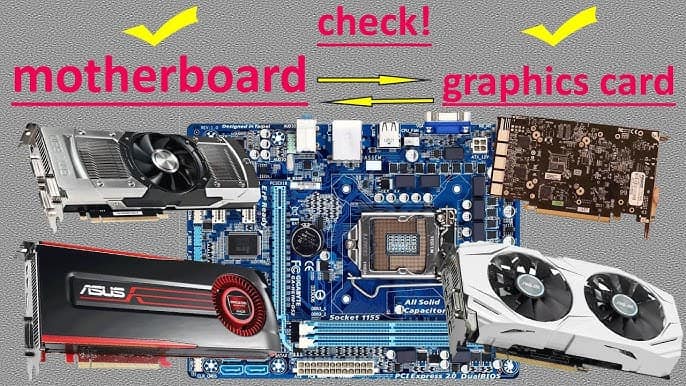
1. Chipset Compatibility
Chipset compatibility ensures the motherboard’s chipset can fully support your GPU’s features. The chipset manages communication between the GPU and other components.
A compatible chipset maximizes GPU performance and prevents bottlenecks, ensuring smooth operation.
2. BIOS and Firmware Updates
BIOS and firmware updates help the motherboard recognize and work with newer GPUs. These updates fix compatibility issues, add support for new features, and improve stability.
Checking for and applying the latest updates ensures your GPU functions correctly with your motherboard.
Also Read: Nvidia G Sync With AMD GPU – The Ultimate Guide In 2024!
Physical Compatibility Considerations
1. Case Size and GPU Clearance
Case size and GPU clearance ensure the GPU fits inside your computer case without blocking other parts. Measure your case’s internal space and compare it to the GPU’s dimensions. Adequate clearance allows for proper airflow and easy installation.
2. Expansion Slot Configuration
Expansion slot configuration involves checking if your motherboard has enough PCIe slots for your GPU and other cards.
Ensure the primary PCIe slot is available for the GPU and that other slots are spaced well for additional components like sound cards or Wi-Fi cards.
Power Supply Considerations
1. Power Connector Compatibility
Power connector compatibility ensures your PSU has the correct connectors (like 6-pin or 8-pin) for your GPU. These connectors provide additional power the GPU needs to run efficiently. Without them, the GPU might not work properly or could cause system instability.
2. Power Delivery and Wattage Requirements
Power delivery and wattage requirements involve ensuring your PSU can supply enough power for the GPU and other components.
The PSU’s wattage should meet or exceed the total power demand. Proper power delivery ensures stable performance and prevents issues like overheating or shutdowns.
Compatibility with Multi-GPU Configurations
1. SLI and CrossFire Support
SLI (NVIDIA) and CrossFire (AMD) allow multiple GPUs to work together for better performance. Your motherboard must support these technologies and have the necessary PCIe slots. Ensuring SLI or CrossFire support maximizes your system’s gaming or graphics capabilities.
2. Bridge Connectors and Configuration
Bridge connectors physically link multiple GPUs in SLI or CrossFire setups, helping the GPUs work together efficiently.
Proper configuration of these bridges, along with software settings, ensures optimal performance from your multi-GPU setup.
Future-Proofing and Upgradability
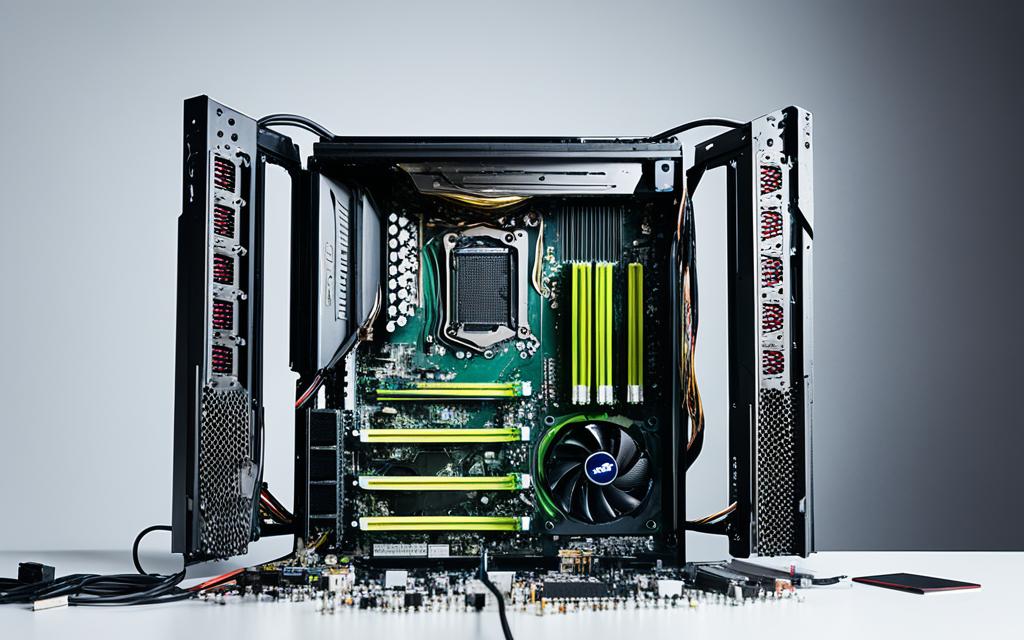
1. Consideration of Future GPU Upgrades
When choosing a GPU and motherboard, think about future upgrades. Ensure your motherboard can handle more powerful GPUs or new technologies. This planning allows you to upgrade your system without needing to replace too many parts later.
2. PCIe Gen Compatibility
PCIe Gen compatibility ensures your GPU and motherboard work well together, even if they use different PCIe generations (like PCIe 3.0 or 4.0).
PCIe is backward compatible so that newer GPUs can work with older motherboards, but they might need to reach their full potential.
Must Read: Can GPU Cause Blue Screen? – Simple Solutions For Quick Fix!
How to Test Motherboard Compatibility with New Graphics Card?
To test compatibility, check if the motherboard has the correct PCIe slot for the GPU and if your power supply meets the GPU’s power requirements. Also, ensure that the BIOS is updated to support the new GPU.
Motherboard/CPU and GPU Compatibility
Motherboard/CPU and GPU compatibility involves ensuring that the motherboard’s PCIe slot matches the GPU’s connector and that the CPU doesn’t bottleneck the GPU’s performance. Proper matching of these components ensures balanced and efficient performance.
GPU /Board Compatibility
GPU/board compatibility means checking if the GPU fits the motherboard’s PCIe slot and if the motherboard can handle the GPU’s power needs. Also, ensure the motherboard’s BIOS supports the GPU for smooth operation.
Can any GPU fit in any motherboard?
Not all the GPUs fit all motherboards. The GPU must match the motherboard’s PCIe slot type and size. Additionally, the motherboard must support the GPU’s power requirements and BIOS features to ensure proper functionality.
Is my motherboard compatible with CPU
To check if your motherboard is compatible with a CPU, ensure the CPU socket type matches the motherboard’s socket. Also, verify that the motherboard’s chipset supports the CPU and that the BIOS is up-to-date.
Motherboard GPU compatibility checker
A motherboard GPU compatibility checker is an online tool that helps determine if a specific GPU will work with your motherboard. It checks slot compatibility, power requirements, and BIOS support to ensure a good fit.
Motherboard graphics card compatibility checker online
An online motherboard graphics card compatibility checker helps you verify if your graphics card will work with your motherboard. It considers PCIe slots, power needs, and BIOS updates to ensure compatibility.
GPU Compatibility with CPU
GPU compatibility with the CPU involves ensuring that the CPU can handle the GPU’s performance without bottlenecking. The motherboard should also support both the GPU and CPU, and they should work well together for optimal performance.
Can old motherboard support new GPU
An old motherboard can support a new GPU if it has the correct PCIe slot and meets the GPU’s power requirements. Check for BIOS updates and ensure the motherboard can handle the latest GPU’s performance demands.
Motherboard’s Compatibility with GPU
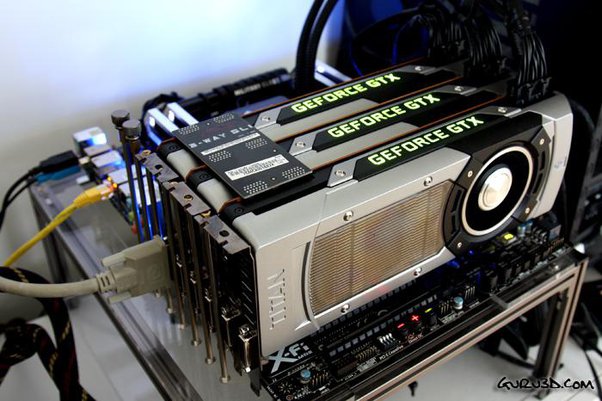
Motherboard compatibility with a GPU involves checking if the motherboard has the correct PCIe slot for the GPU and can provide sufficient power. Ensure that the BIOS supports the GPU and that there is enough physical space for it.
Can I use any graphics card with any motherboard?
You cannot use any graphics card with any motherboard. The motherboard must have the right PCIe slot for the GPU and meet the graphics card’s power and BIOS requirements.
Can an old GPU be incompatible with newer motherboards?
An old GPU may be incompatible with newer motherboards if the motherboard lacks the correct PCIe slot or requires a different power connector. BIOS updates may also be needed to make older GPUs compatible.
Does all dedicated GPUs work with any motherboard?
Not all dedicated GPUs work with every motherboard. The motherboard must have the correct PCIe slot and sufficient power supply. Additionally, BIOS support is necessary for proper functionality.
Graphics card and motherboard compatibility
Graphics card and motherboard compatibility means ensuring the motherboard has the correct PCIe slot, power connectors, and BIOS support for the GPU. Proper compatibility ensures the GPU functions correctly and avoids performance issues.
Possibly incompatible Graphics Card and Motherboard?
A graphics card might be incompatible with a motherboard if the slot type doesn’t match, the power supply isn’t adequate, or the BIOS doesn’t support the GPU. Checking these factors helps avoid compatibility issues.
Must Read: GPU Hardware VM Is Disabled – Step-By-Step Guide To Fixing!
Will my motherboard support any graphics card?
Your motherboard will support a graphics card if it has the correct PCIe slot and sufficient power supply. Also, ensure the BIOS is up-to-date to handle the GPU’s requirements.
Does my motherboard support the NVIDIA RTX A6000 GPU?
To check if your motherboard supports the NVIDIA RTX A6000 GPU, verify that it has a PCIe x16 slot, meets the GPU’s power requirements, and has an updated BIOS that supports the GPU.
The VGA card is not supported by Uefi driver problem.
If the UEFI driver doesn’t support your VGA card, it may cause issues with booting or functionality. To resolve the problem, check for BIOS updates or drivers that add support for the VGA card.
GPU works in other motherboards but not new one
If a GPU works in other motherboards but not in a new one, it could be due to slot compatibility, power issues, or BIOS settings. Verify the new motherboard’s slot, power requirements, and BIOS updates.
What GPU can my motherboard support?
To determine what GPU your motherboard can support, check the PCIe slot type, power supply capacity, and BIOS compatibility. For specific GPU compatibility details, consult your motherboard’s manual or manufacturer’s website.
Motherboard for GPU
A motherboard is essential for connecting a GPU to your computer. It provides the PCIe slot for installation, power delivery, and communication with the CPU. Choosing a compatible motherboard ensures smooth GPU operation and avoids performance issues or system instability.
Do GPUs only work on specific motherboards?
Most GPUs work with modern motherboards that have PCIe x16 slots. However, compatibility issues may arise due to outdated BIOS, power supply limitations, or older motherboard models. Always check your GPU’s requirements against your motherboard’s specifications for a seamless experience.
Does my motherboard supports this graphic card?
To check if your motherboard supports a specific GPU, confirm it has a PCIe x16 slot and the necessary power connectors. Verify the BIOS is updated and compare the GPU’s dimensions with your case’s available space for proper installation.
Ho to tell if my comp has incompatible GPU?
If a GPU doesn’t work, it could be incompatible with your motherboard. Common signs include no display, system crashes, or BIOS errors. Check the PCIe slot, power supply, and BIOS version to confirm compatibility and address any issues.
Motherboard/GPU compatibility checker
A compatibility checker is an online tool that helps confirm if your GPU matches your motherboard. It checks PCIe slots, power requirements, and BIOS support. Using such tools simplifies the process and ensures your components work well together.
You Should Know: Do You Plug Monitor Into GPU? – Everything You Need to Know!
Will a new graphics card work on an old motherboard?
A new GPU can work on an old motherboard with a PCIe x16 slot. However, older BIOS versions or insufficient power supply might cause compatibility issues. Updating the BIOS and checking power requirements can resolve most problems.
ASUS motherboard GPU compatibility
ASUS motherboards are compatible with most GPUs as long as they have PCIe x16 slots. Always check the GPU’s size, power needs, and whether your motherboard’s BIOS is updated to avoid performance or compatibility issues.
NVIDIA graphics card compatibility check
To check compatibility for NVIDIA GPUs, confirm your motherboard has a PCIe x16 slot, a powerful enough PSU, and enough space in the case. NVIDIA’s website and online tools can help ensure the GPU fits your system.
Can a motherboard affect GPU?
Yes, a motherboard can affect a GPU’s performance. Issues like outdated PCIe versions, limited power delivery, or BIOS problems may restrict GPU functionality. Ensuring compatibility between your motherboard and GPU avoids performance bottlenecks or system failures.
Why is my GPU not working with my motherboard?
A GPU might only work if your motherboard’s PCIe slot is repaired, the BIOS is outdated, or power supply connections need to be included. Check all hardware connections, update the BIOS, and ensure sufficient power to resolve the issue.
Do CPU and GPU have to be compatible?
While CPUs and GPUs don’t directly depend on each other, they should work efficiently together. A weak CPU may bottleneck a powerful GPU, reducing performance. Pairing a balanced CPU and GPU ensures smoother gaming or productivity performance.
Can a graphics card break a motherboard?
A graphics card will typically break a motherboard if there’s a power surge, incorrect installation, or a mismatch in power delivery. Proper handling, compatible parts, and adequate power can prevent hardware damage.
Does motherboard chipset matter for GPU?
The chipset doesn’t directly impact GPU compatibility but affects system features like PCIe lanes and performance. Higher-end chipsets offer better support for advanced GPUs. Ensure your motherboard’s chipset matches your GPU’s needs for optimal results.
What happens if your motherboard doesn’t support the gpu?
If your motherboard doesn’t support a GPU, the system won’t display video or may not boot. Common causes include incompatible PCIe slots, outdated BIOS, or insufficient power supply. Replacing the motherboard or GPU may be necessary.
How can I determine if a new graphics card is compatible with my current motherboard and power supply?
Check your motherboard for a PCIe x16 slot and confirm your power supply meets the GPU’s wattage and connector requirements. Verify your case size and update the BIOS if necessary for smooth installation and operation.
FAQs
1. How do I tell if a GPU is compatible with my motherboard?
Check to see if the motherboard has the correct PCIe slot, sufficient power supply, and an updated BIOS to support the GPU.
2. Does the motherboard matter for GPU?
Yes, the motherboard must have the correct PCIe slot, power connectors, and BIOS support for the GPU to work correctly.
3. Do I need to upgrade my motherboard for a new GPU?
You may need to upgrade your motherboard if it lacks the correct PCIe slot, power connectors, or BIOS support for the new GPU.
4. Can a GPU be too good for a motherboard?
Yes, a high-performance GPU might be limited by an older motherboard’s slot type, power capacity, or BIOS support, causing bottlenecks.
5. Can my motherboard bottleneck my GPU?
Yes, an outdated motherboard can bottleneck a GPU if it lacks a fast PCIe slot, adequate power, or proper BIOS support.
6. Are all brands of a given graphics card equally compatible with all motherboards?
Generally, all brands of the same GPU model are compatible with any motherboard that supports the GPU’s PCIe slot and power needs.
7. Will my OLD motherboard be compatible with newer Video Cards? How can I tell?
Check if the old motherboard has the correct PCIe slot and sufficient power supply. Ensure BIOS updates support the newer video card.
8. Will all modern motherboards support all modern graphics cards without any issues?
Most modern motherboards support current graphics cards if they have the correct PCIe slot and power connectors. Check for BIOS updates for full compatibility.
9. How do I know which graphics cards are compatible with my motherboard?
Verify the motherboard’s PCIe slot type, power supply, and BIOS support. Check the manufacturer’s specs or compatibility lists for supported graphics cards.
10. I am wanting to upgrade my GPU however will it be compatible with my motherboard?
Check the motherboard’s PCIe slot, power connectors, and BIOS support. Verify compatibility with the new GPU’s requirements to ensure a successful upgrade.
Conclusion
Ensuring GPU and motherboard compatibility is crucial for optimal performance. To avoid issues, verify the PCIe slot, power supply, and BIOS support. Proper checks ensure smooth operation and prevent potential problems with your computer build or upgrade.
